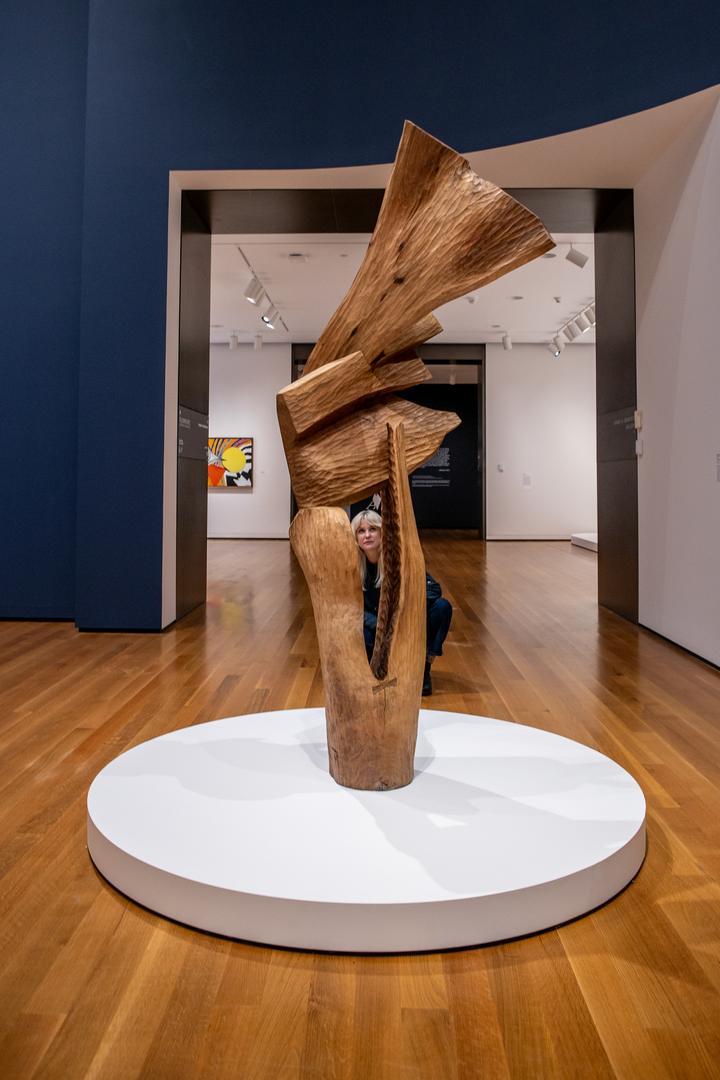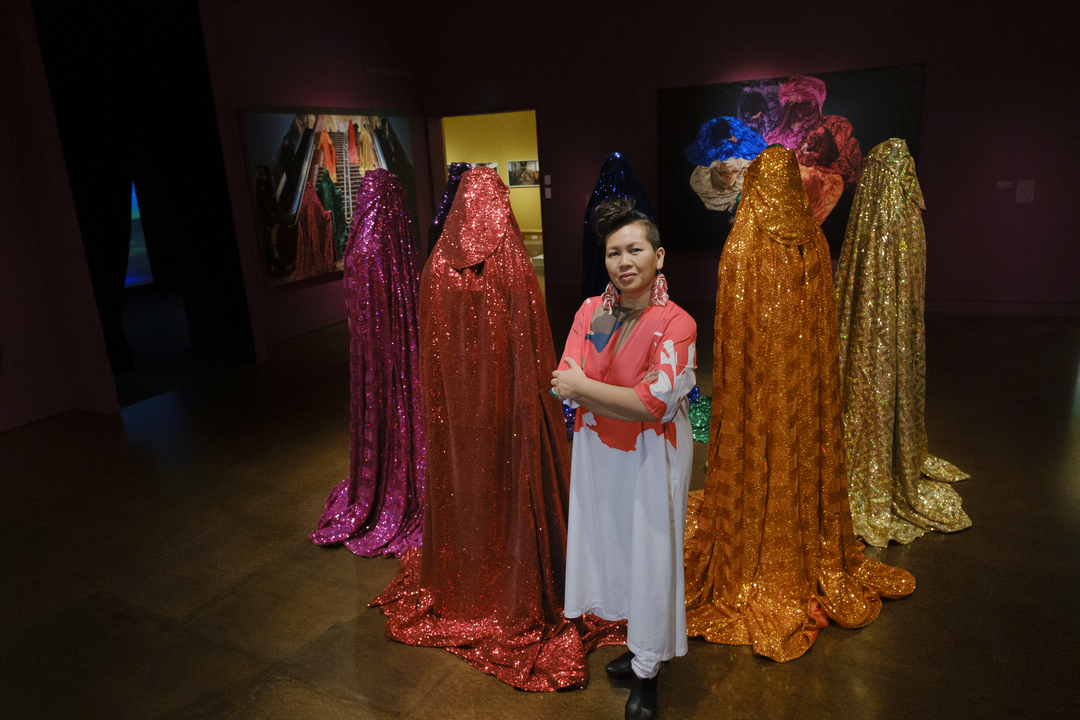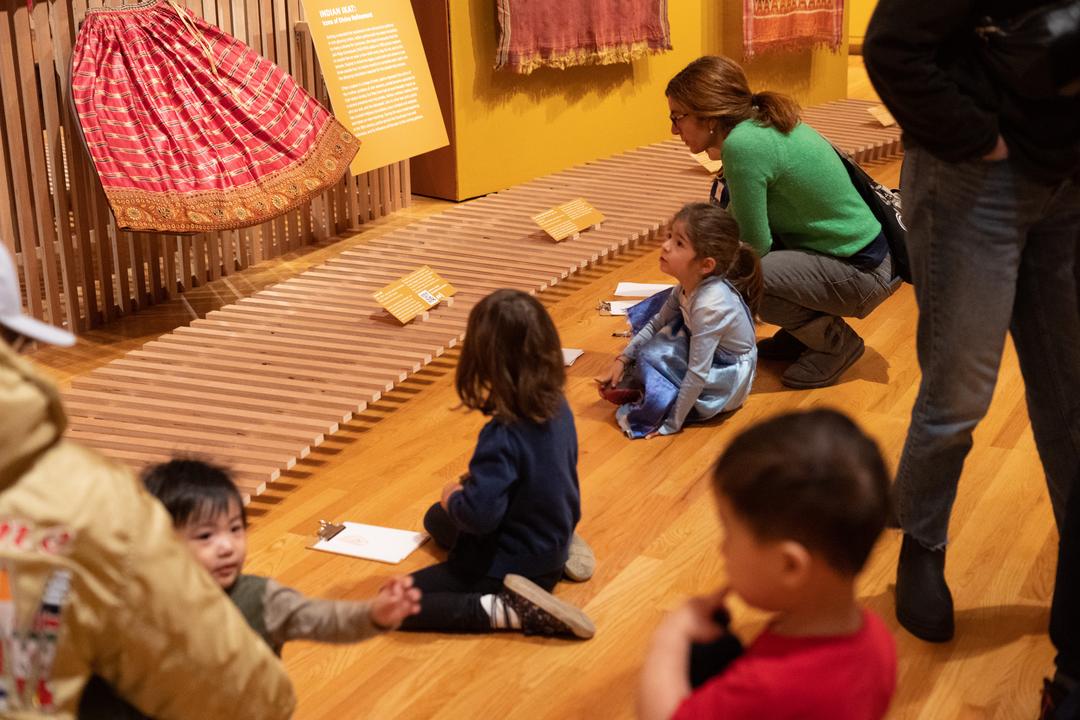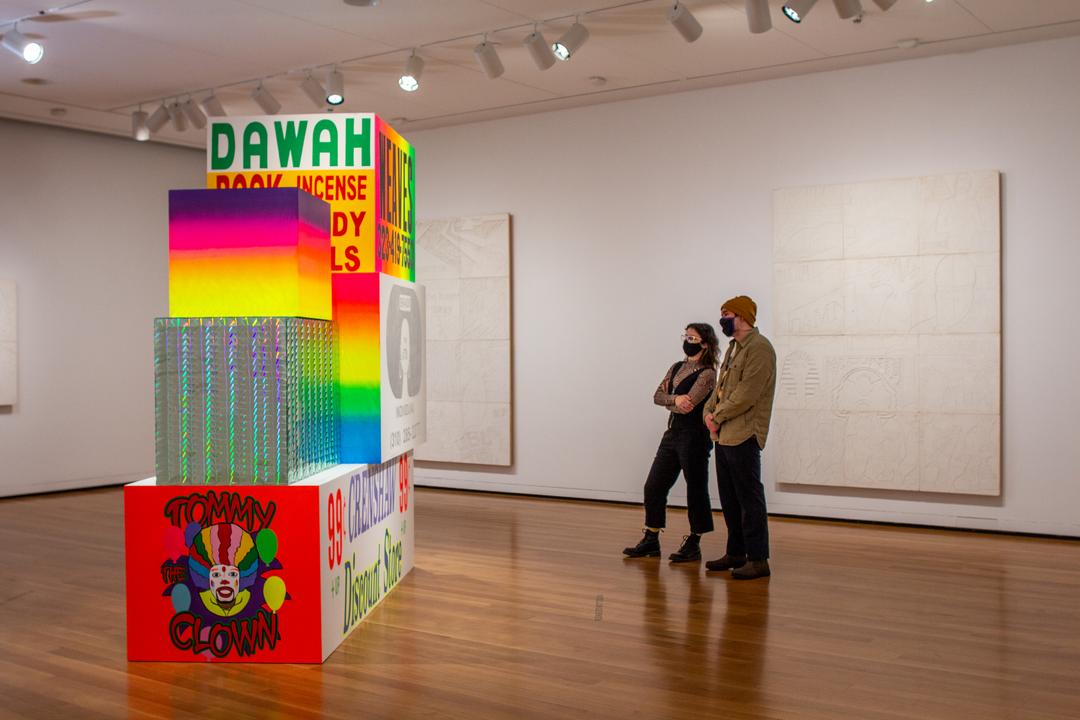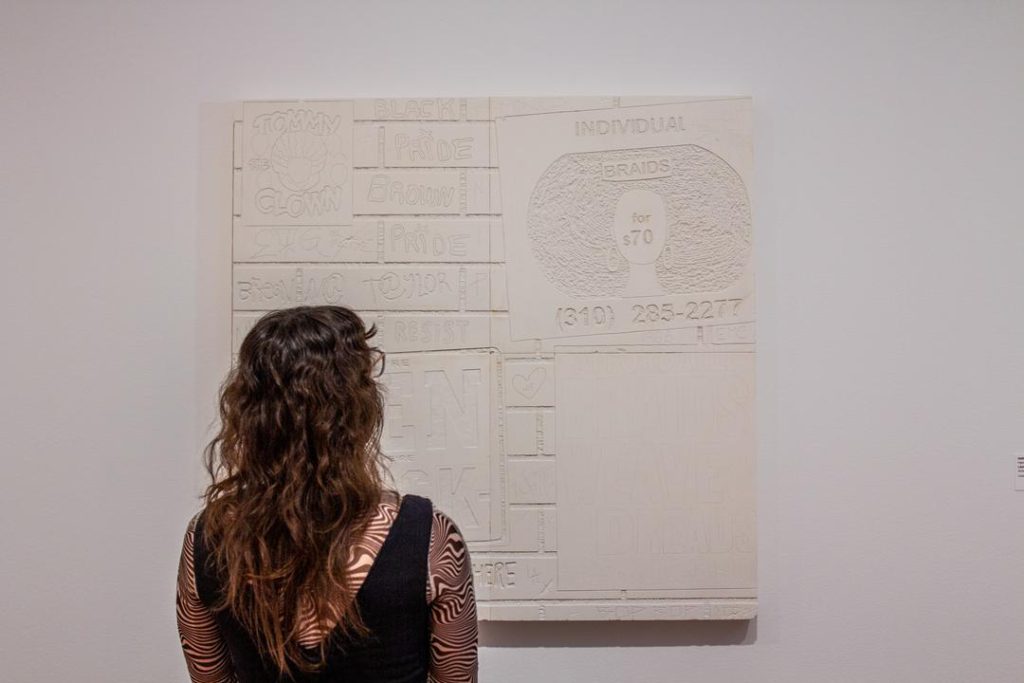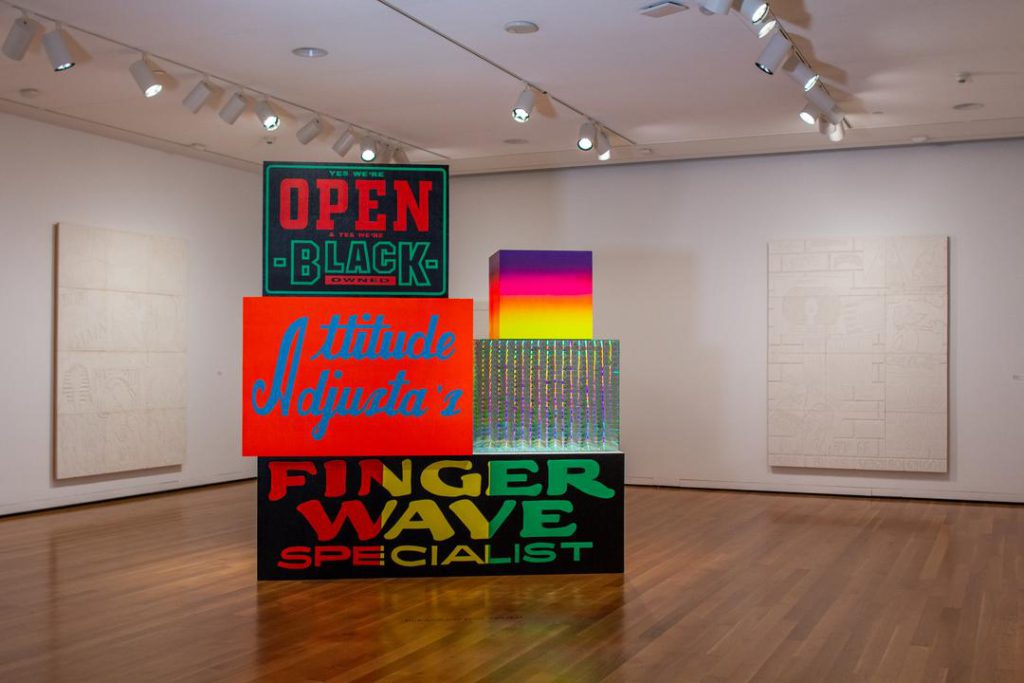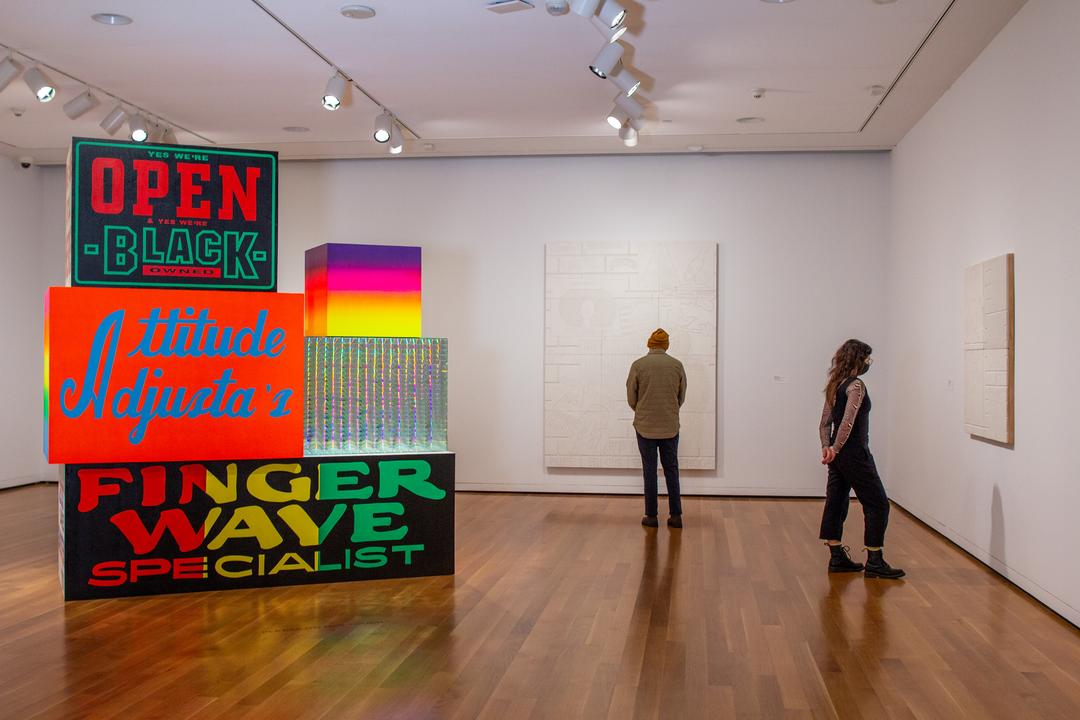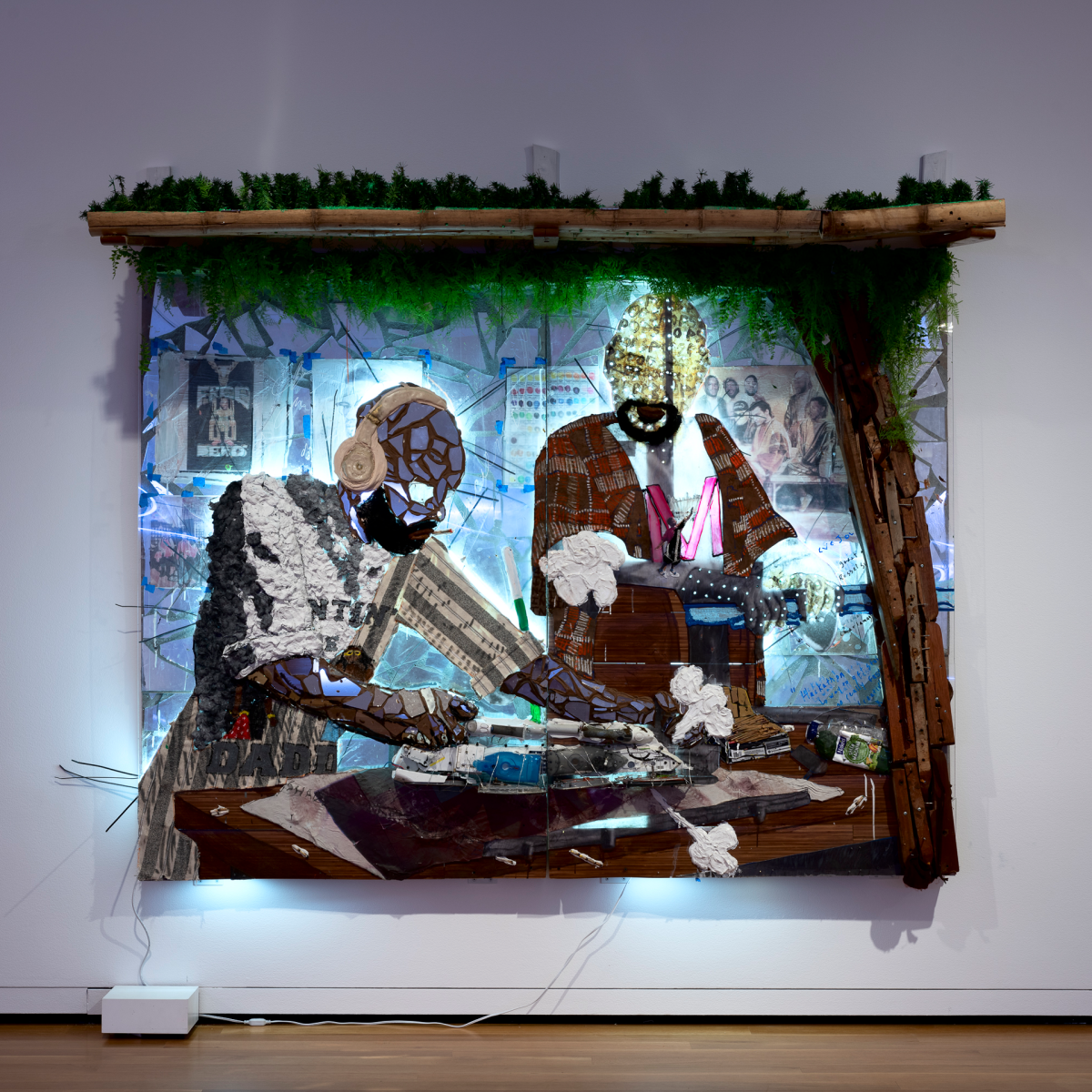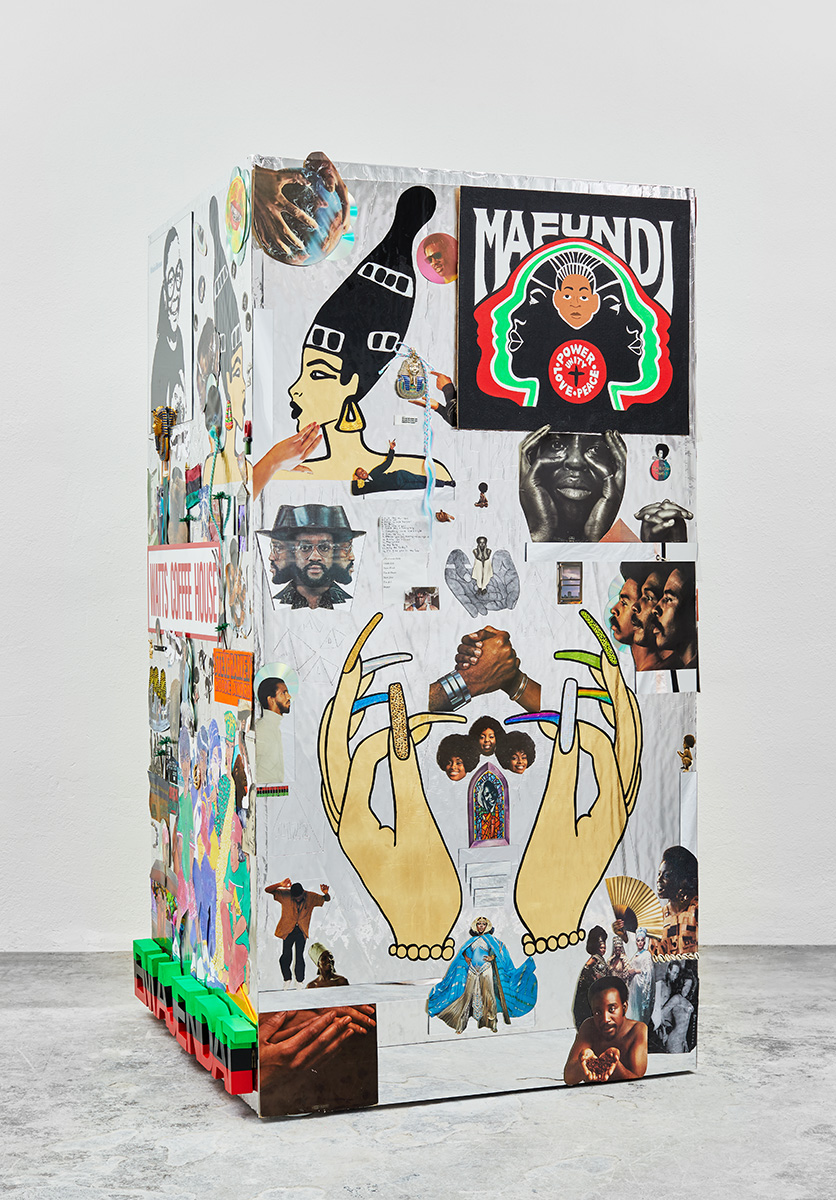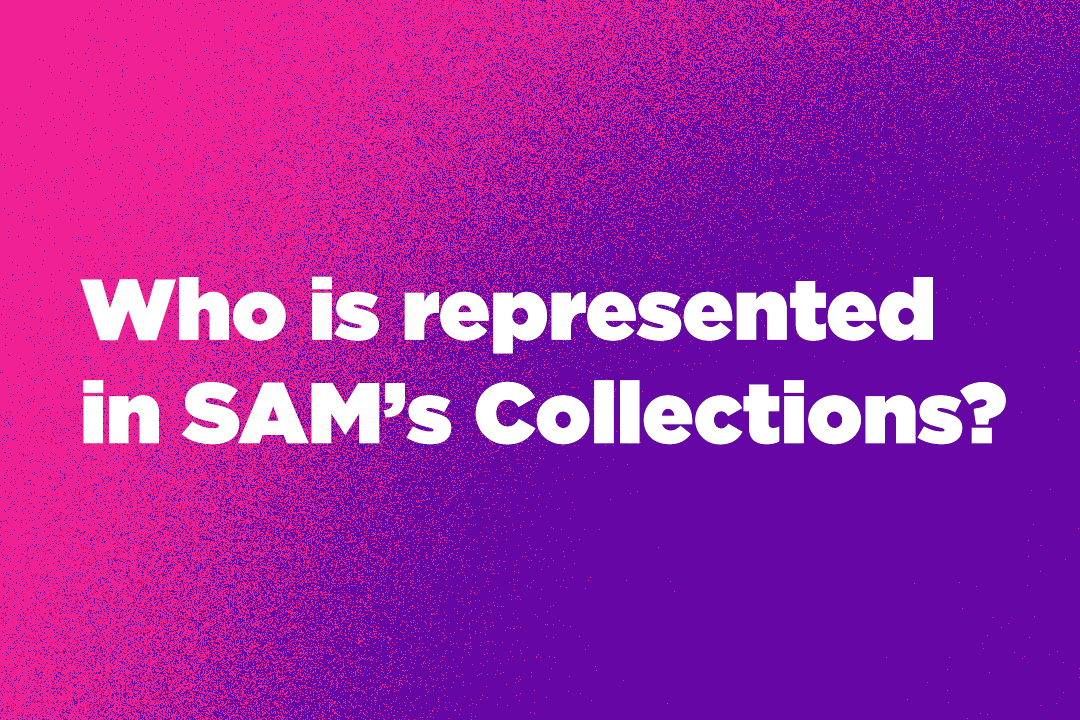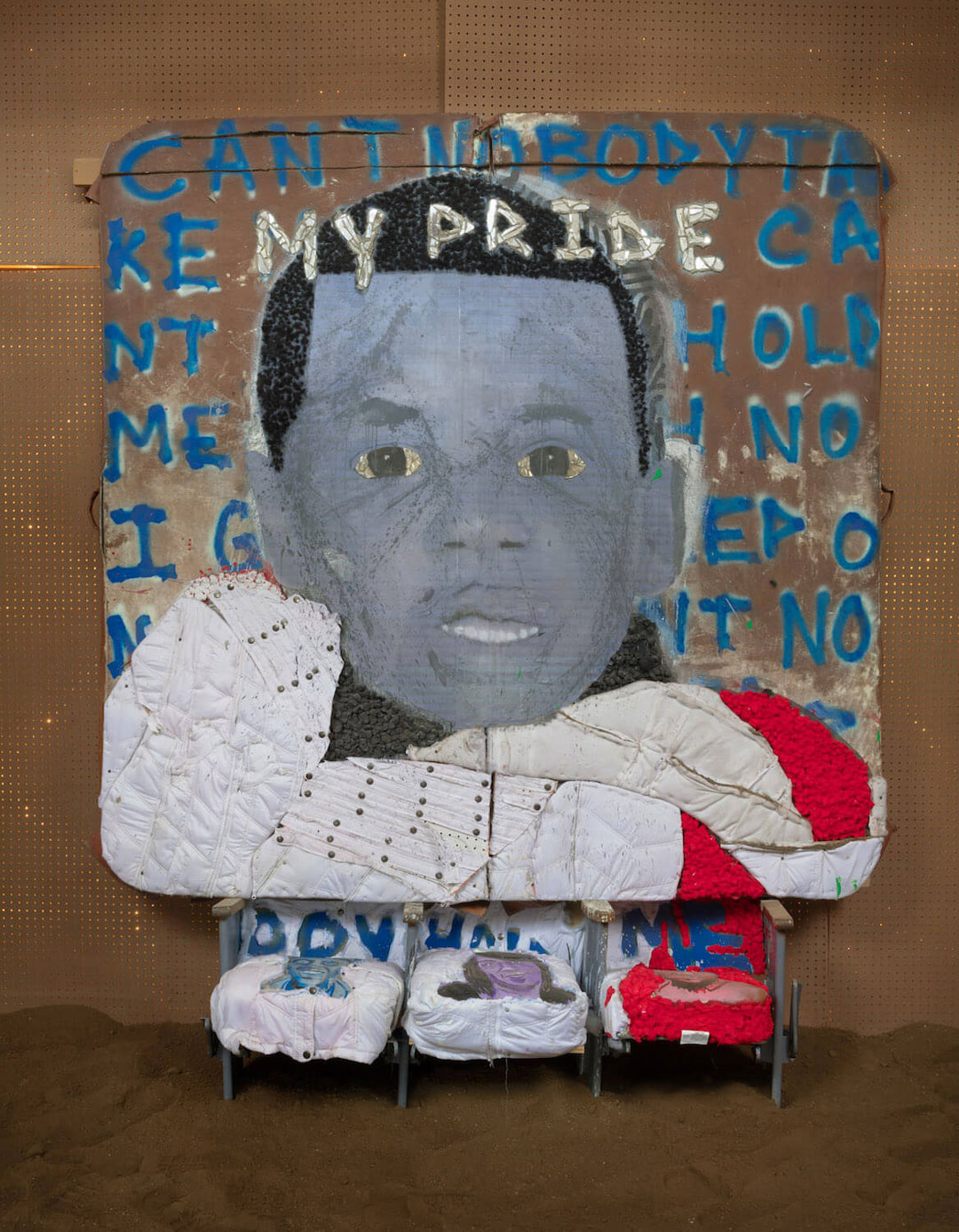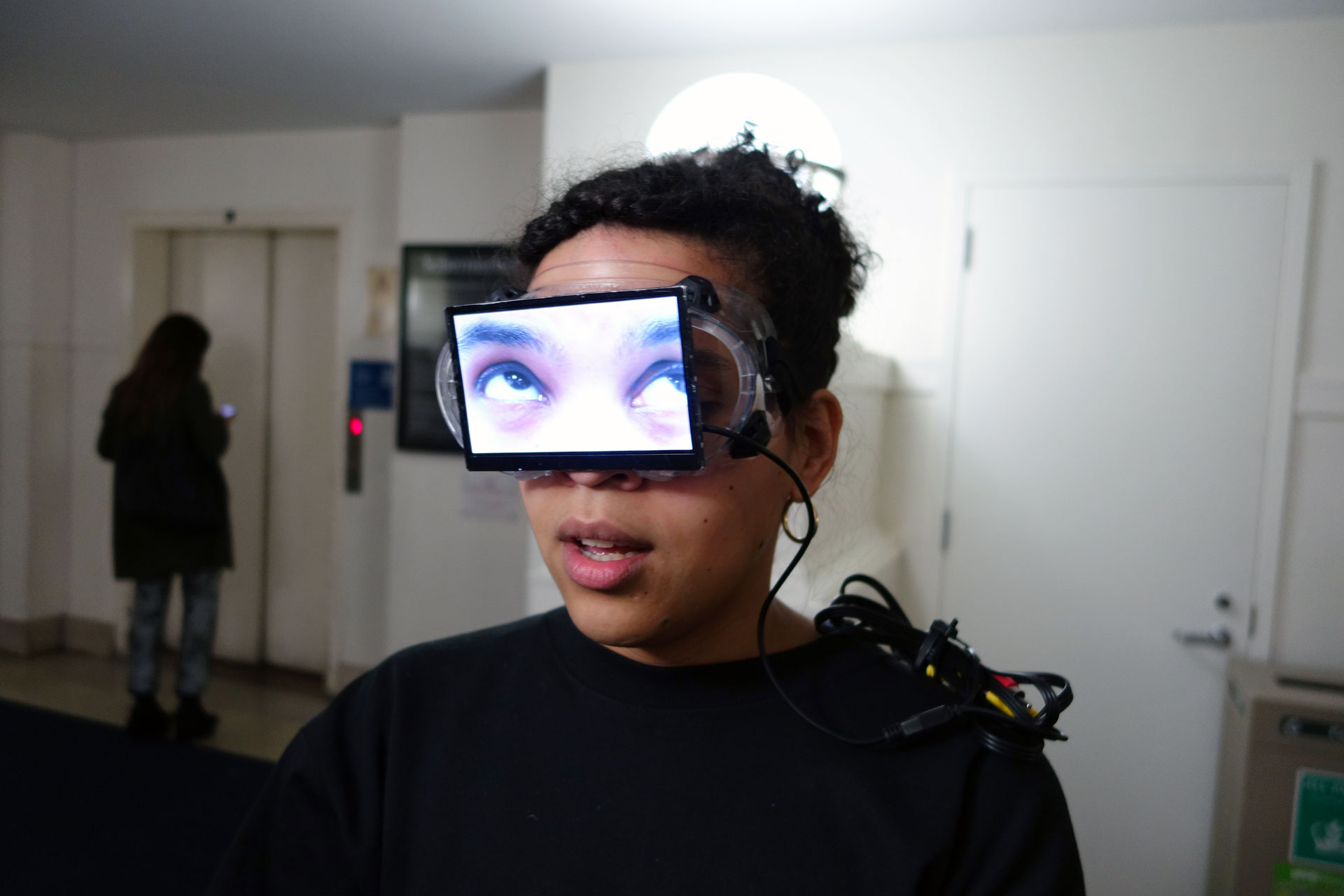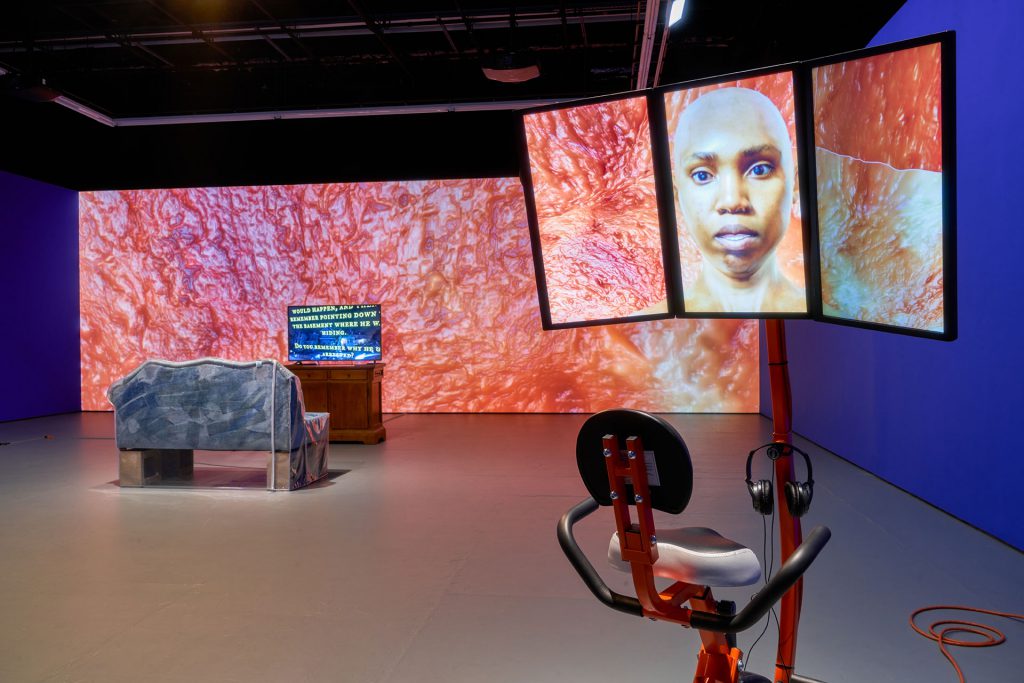Celebrate Black History Month 2025 with Four Artworks by Contemporary Black Artists On View at SAM
Happy Black History Month! Founded by Dr. Carter G. Woodson in February 1926, this month is a time to learn and share about Black history, life, and culture in the US. Nearly 100 years later, this work remains urgent, especially in the face of ongoing efforts to dismantle the vision of a pluralistic society and target Black people specifically.
This year, the Association for the Study of African American Life and History (ASALH) has chosen “African Americans and Labor” as the central theme. We’re spotlighting four artworks by contemporary Black artists that you can see on view now in SAM’s galleries. And we’ll be thinking about how their art connects with the idea of labor, whether through the physical acts of their creative process or the deeper themes expressed in their work.
The Odyssey: 1862 / 1837 (2024)
Bethany Collins
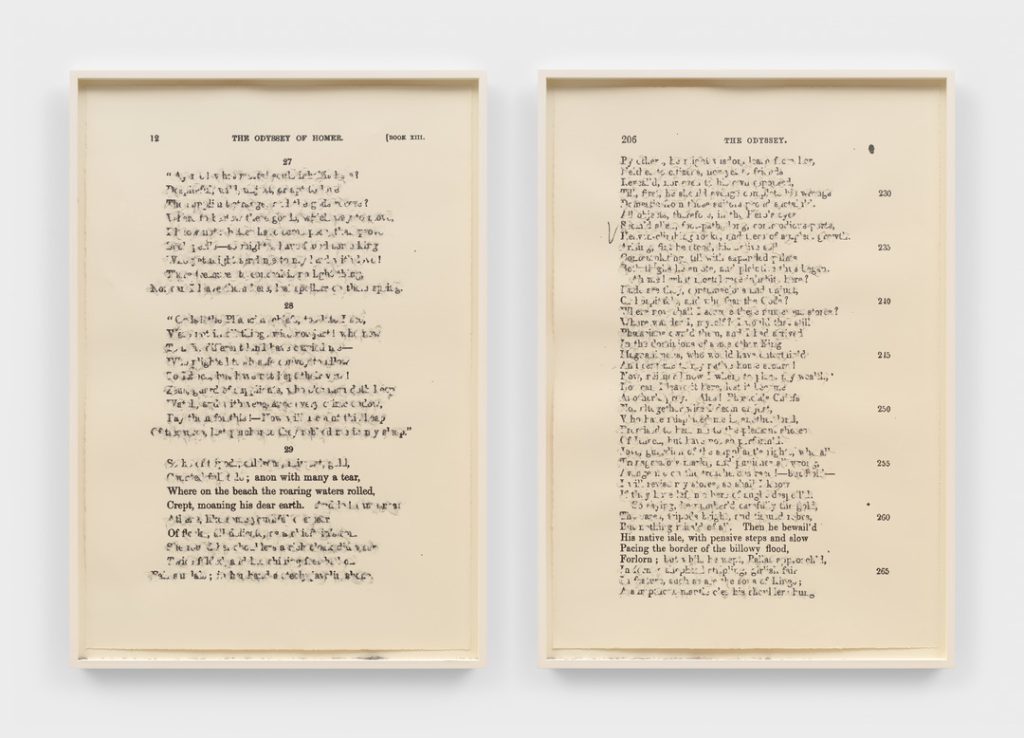
“Collins’s eraser lends particular poignancy to Odysseus’s feelings of statelessness, grief and unrecognition – whether we are watching a new presidency take shape or seeing a flame flicker on the horizon.” – Claudia Ross, Frieze Magazine.
Bethany Collins is the recipient of the 2023 Gwendolyn Knight and Jacob Lawrence Prize, awarded biennially by SAM since 2009 to an early to mid-career Black artist—defined loosely as an artist in the first decade of their career. At Sea is the solo show in honor of her win, debuting 15 works that have never been on view.
In her conceptual work, the Chicago-based artist uses strategies of erasure and redaction to point out the limits and possibilities of language. Her own intense labor is a key part of her practice. Using a Pink Pearl eraser and her own spit, she obstructs select words from familiar texts, revealing deeper meanings in the process. In The Odyssey: 1862 / 1837, she takes on Book 13 of the ancient Greek epic, obstructing every line but one from the two translations. From the 1837, it’s the timely line:
‘Then he bewail’d / His native isle, with pensive steps and slow / Pacing the border of the billowy flood, Forlorn.”
Two Way Connection (2021)
Woody De Othello
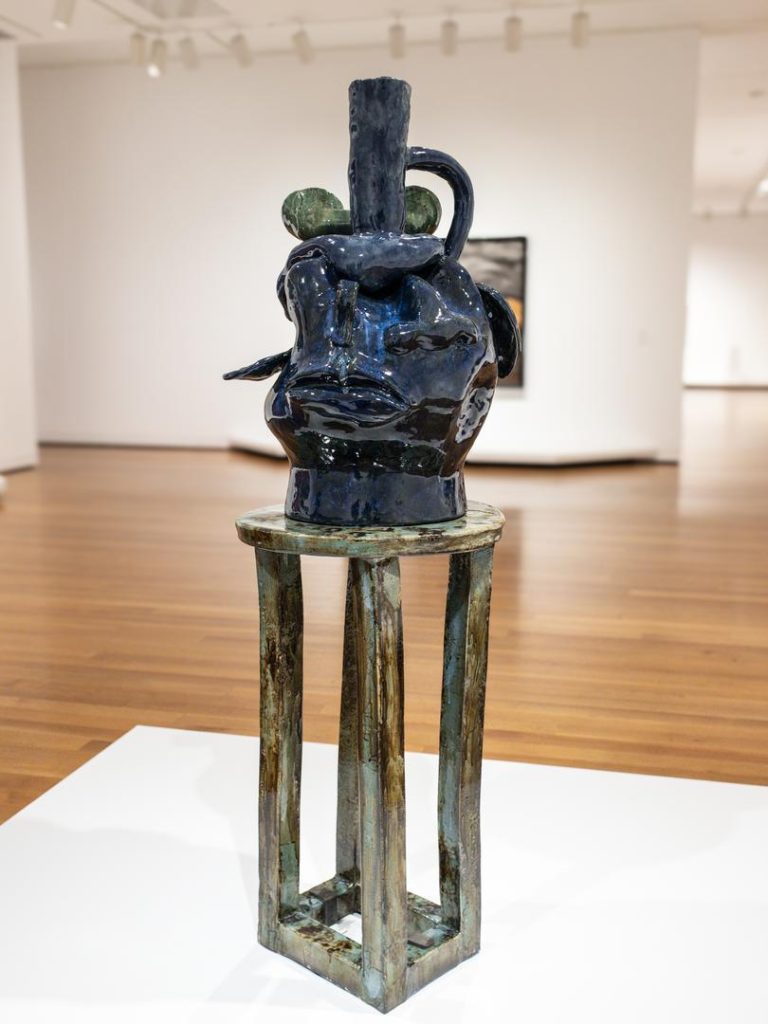
Woody De Othello’s deep blue ceramic sculpture Two Way Connection requires a full 360-degree turn around the work to see all the shapes that emerge. Different body parts—lips, ears, and fingers—meld together. On top, there’s a clearly defined green telephone receiver, a handle, and a spout.
Othello created this work during the COVID-19 pandemic when human connection was mostly limited to the virtual realm. Othello brings the body and the senses back into those distanced conversations and, in this piece, the two faces become one, connected through the phone.
The sculpture is also influenced by face vessels, a distinctive art form created by enslaved Black potters in Edgefield, South Carolina during the 1800s. These potters created stoneware for food and water at a mass scale under slavery, but also with artistry, creativity, and their own representations of Black people. Edgefield face vessels capture theatrical expressions with intricately sculpted features protruding from the surface and the spout emerging from the top of the head, which is echoed in Othello’s work.
Opposing Parallels – Blues Up and Down for G. Ammons and S. Stitt (2015)
Thaddeus Mosley
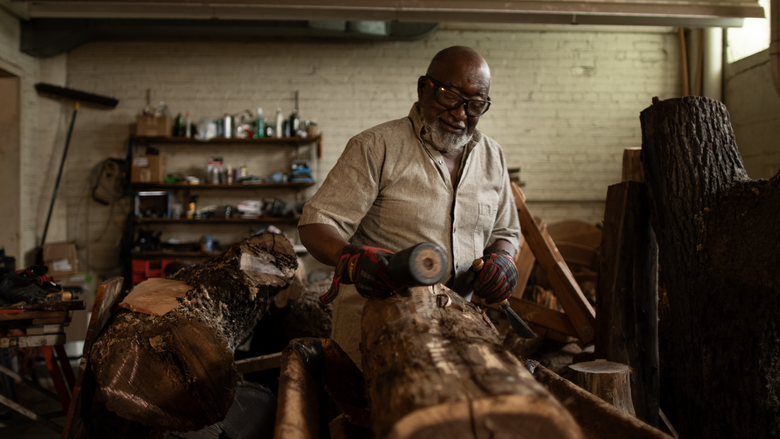
At 98 years old, Thaddeus Mosley works in his studio every day making his large-scale wood sculptures. Often, the sound of jazz rings throughout the space while he works, mingling with the sounds of his tools as he carves and buzzes and sands the wood into the shapes and textures he wants. Mosley is a passionate fan of classic jazz, and his studio is stocked with vinyl records of this essential Black art form.
Opposing Parallels – Blues Up and Down for G. Ammons and S. Stitt (2015) is one of 17 of the artist’s works on view in Following Space: Thaddeus Mosley & Alexander Calder. The sculpture is installed so that visitors can walk around the entire work and look through it. The title recognizes two virtuoso jazz saxophonists, Gene Ammons and Sonny Stitt, who frequently played and recorded together starting in the 1950s. Just as Ammons and Stitt engaged in a dynamic call-and-response style of improvisation, Mosley’s process embraces spontaneity and rhythmic flow—translating the spirit of jazz into three-dimensional form.
All she wants to do is dance (Fran) (2009)
Mickalene Thomas
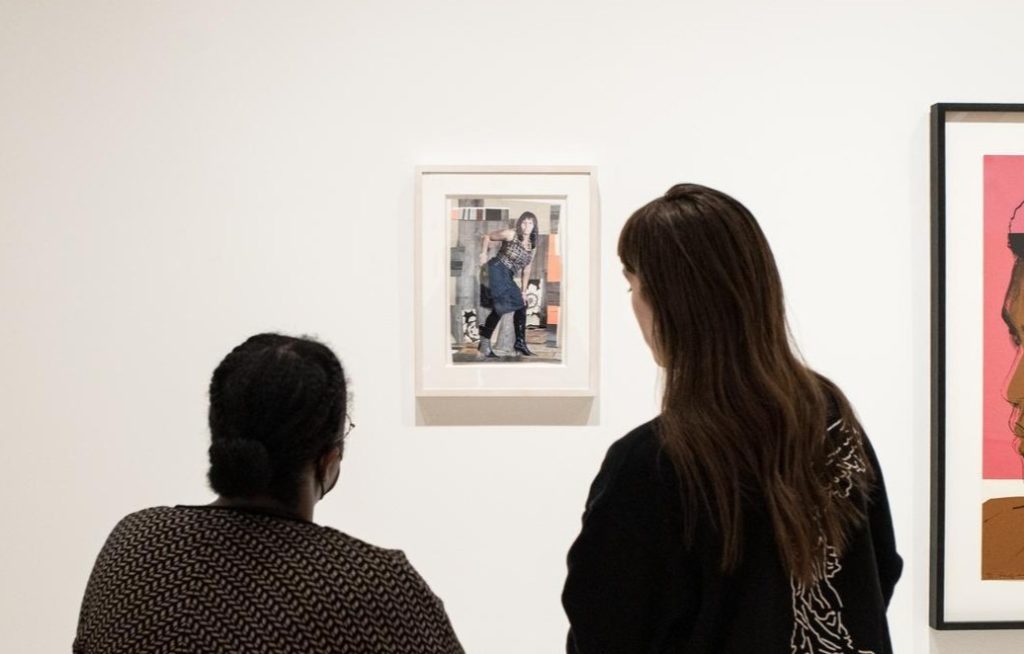
Mickalene Thomas celebrates the complexity and individuality of Black women by bringing them into the art world and refuting stereotypes. She cites inspiration from Blaxploitation films of the 1970s that capitalized on exaggerated portrayals of the Black community and particularly the promiscuousness of Black women.
Thomas doesn’t shy away from sexuality or sensuality and portrays her subjects in control of their bodies and their environment. The women Thomas depicts are not restrained or holding back but overflowing with confidence and personal style—bold patterns, glitter and glam, accessorized to the max, and staring back at the viewer.
In some of her pieces, Thomas recruits models from her everyday life—Fran, depicted here, was her hairdresser. In this collage, Fran is striking a pose with her hand on her hip, pursing her lips, and looking directly into the camera, showing off her chunky metal jewelry and reptilian boots. Fran isn’t overly sexualized or idealized as someone’s image of a party girl; she’s just herself and “all she wants to do is dance.”
Celebrate Black History Month in Seattle with these suggested events.
Through Feb 28
Coloring Outside the Lines
The Northwest African American Museum invites you to celebrate Black art, culture, and communities all month long. Plan a visit to the Central District to enjoy a wide range of free and ticketed programming, including art exhibitions, lectures, and workshops galore. Ticketed events include an interactive painting workshop with AshaAung Helmstetter (Feb 22).
Through Feb 28
Call to Conscience
Every Tuesday through Sunday in February, Columbia City Theater transforms into the Call to Conscience Black History Month Museum. Experience powerful exhibitions, displays, and installations that honor the legacy of the Black communities in the Pacific Northwest. Learn about the untold stories of local groups, including Seattle Black Panther Party. Make sure to secure your time slot and tickets online.
Sat Feb 22
Black Art Takeover
As part of Coloring Outside the Lines, the Northwest African American Museum hosts the Black Art Takeover. This free community event highlights local Black artists working across many mediums, from photography to ceramics. Explore the pop-up market to meet artists and purchase artwork. Other offerings include artist panels, film screenings with Scope Screening, family-friendly art activities, and guided museum tours.
Sat Feb 22
Black History Month Soirée 2025
Dance the night away to live music and performances at Bainbridge Island Museum of Art. When you need a water break, wander through Seattle’s Black Love Market, full of goods from Black-owned businesses and vendors. All ages are welcome, so bring the whole family!
Sat Feb 22
SAM Body + Mind: Poetry Evening featuring Bay Davis
Join us at the Olympic Sculpture Park for a poetry show focused on self-discovery and healing curated by Inside. The headlining poet, Bay Davis, draws from her experience as an Afro-Indigenous Black trans woman and utilizes her work to weave the tools of her own survival as offerings to challenge, heal, and question the systems and climate we exist in today.
Sun Feb 23
Black Ice: An American Sitcom Improvised
Get ready to laugh at this unique comedy show. Unexpected Productions Improv presents a 1970s sitcom-style performance, inspired by TV shows centered on the Black experience, such as All in the Family and The Jeffersons. Audience participation is expected!
Wed Feb 26
Victor Luckerson: A Scheme to Forget, a Demand to Remember
Head to Town Hall Seattle to hear an insightful public lecture from writer Victor Luckerson. The journalist and author will discuss the heartbreaking story of Greenwood and black Tulsans, which is the subject of his book, Built from the Fire. Presented by the University of Washington Office of Public Lectures, the event will be held in the Wyncote NW Forum. If you can’t make it in person, a livestream is also available.
Thu Mar 6
Living Voices: Fly for Freedom
Head to Museum of History and Industry for a multimedia program that spotlights Black women who worked in the aeronautics industry during World War II. Through live theater and archival film, these sidelined stories will take center stage in the Joshua Green Foundation Theater.
– Rachel Eggers, Associate Director of Public Relations and Nicole Block, Collections Associate
Photo credits: The Odyssey: 1862 / 1837, 2024, Bethany Collins, graphite on Somerset paper in 2 parts, overall 46 1/2 x 69 x 1 3/4 in., Courtesy Alexander Gray Associates, New York; PATRON Gallery, Chicago, © 2024 Bethany Collins, Keith Nkeze, Natali Wiseman, Keith Nkeze.
